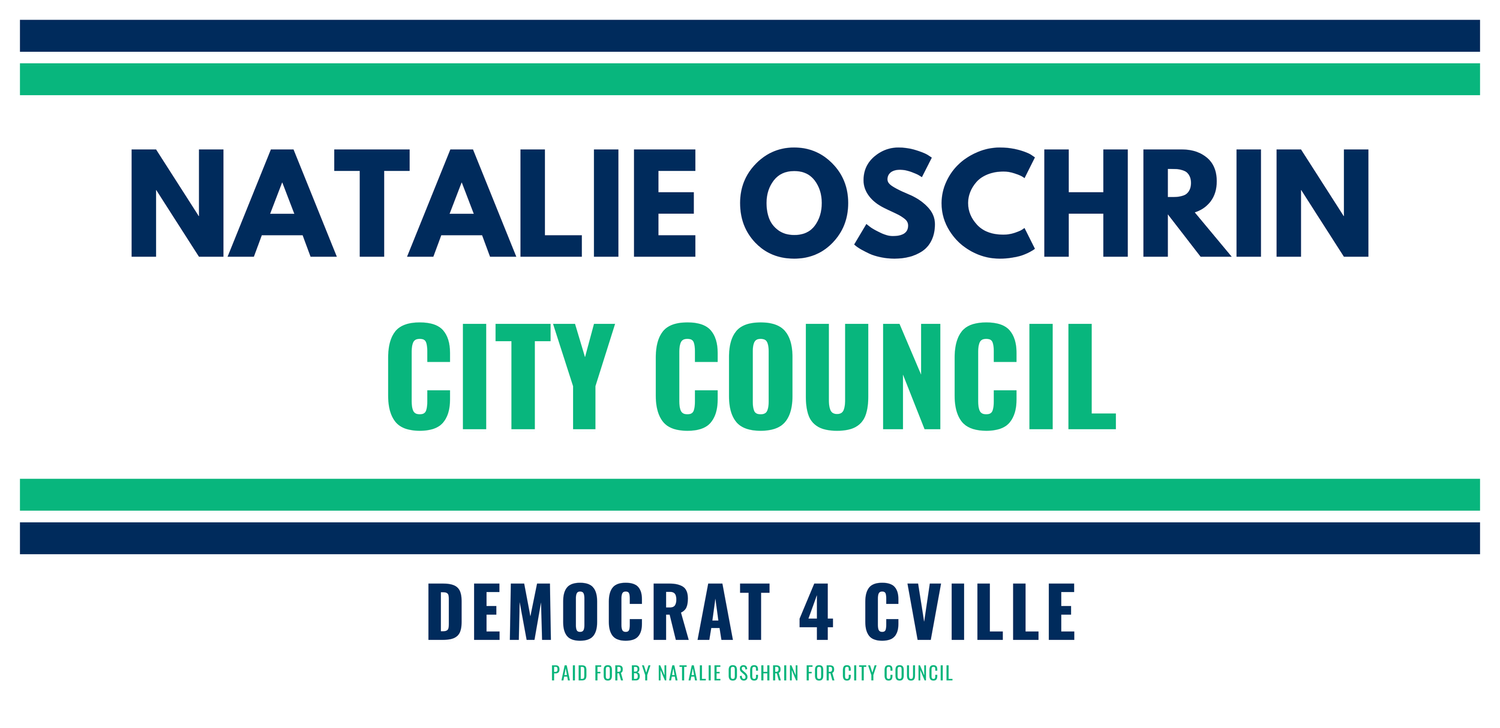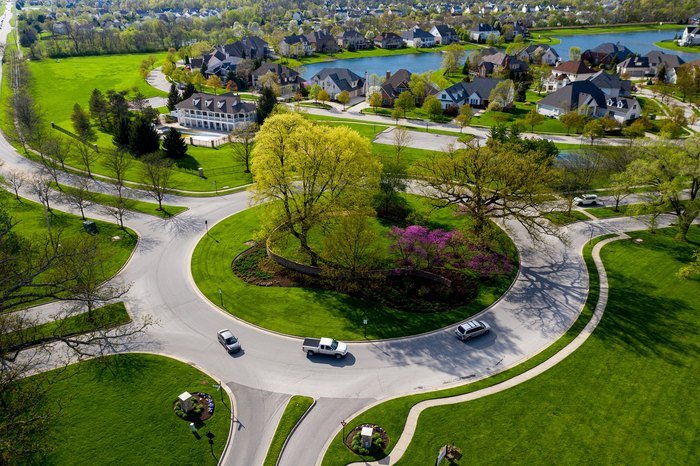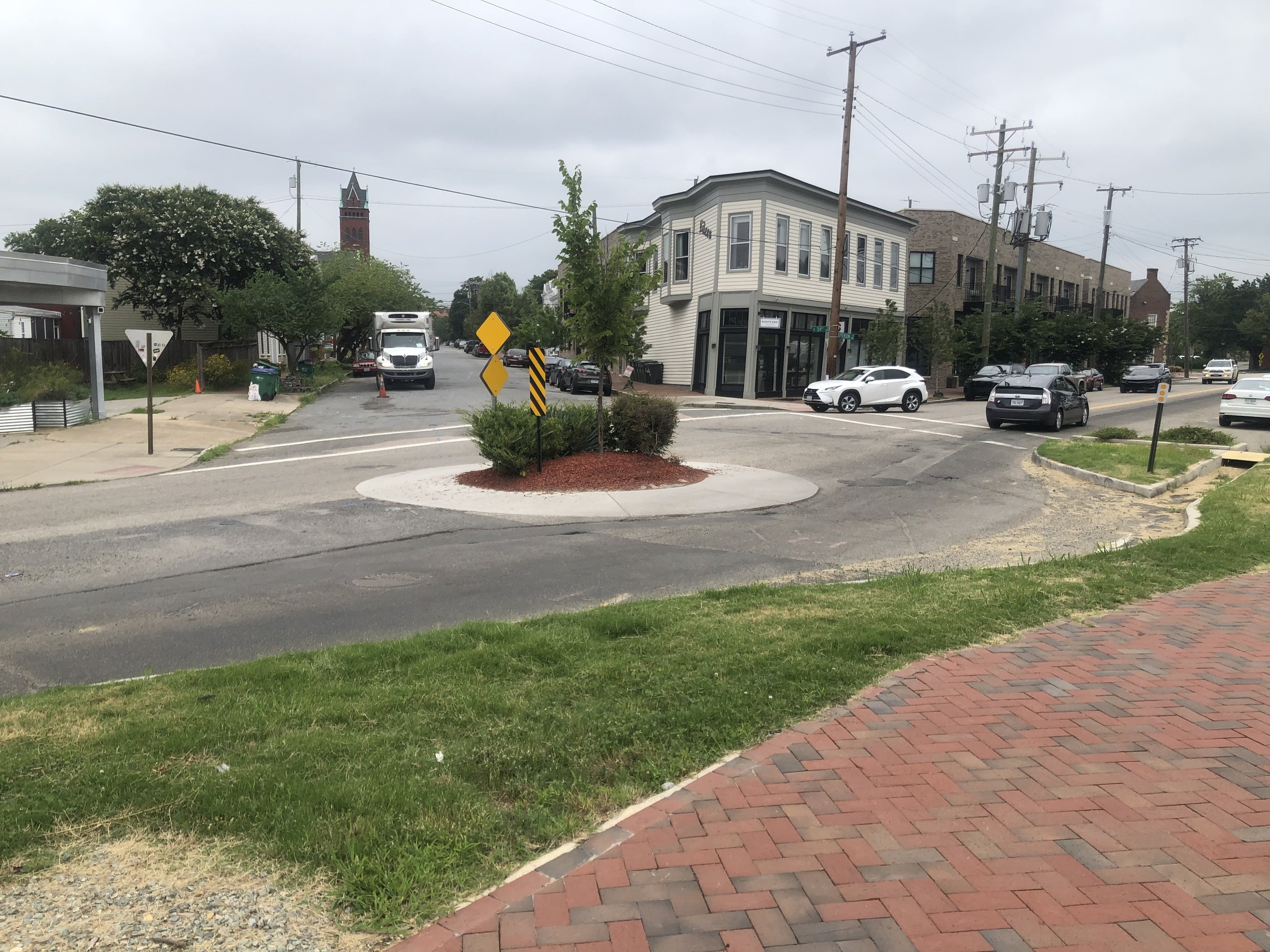Roundabouts
Below are the remarks I prepared for the 06 November City Council meeting:
I’d like to talk about improving streets and street design in Charlottesville. I saw that a traffic light is being installed at the corner of Rugby Avenue and Rose Hill Drive, which would be a great intersection for a roundabout instead. There are numerous roundabouts that already exist in our area and they have all gained user acceptance. It is a proven approach that has many advantages over signalized intersections, all supported by extensive research. According to the Insurance Institute for Highway Safety, roundabouts are:
Safer for cars: The tight circle of a roundabout forces drivers to slow down, reducing chances for the most severe types of intersection crashes — right-angle, left-turn, and head-on collisions. Every driver has to slow for a roundabout, there is no racing to “make the light.”
Safer for pedestrians: Pedestrians walk on sidewalks around the perimeter and cross only one direction of traffic at a time. Crossing distances are shorter, and traffic speeds are lower. Extremely dangerous slip lanes that allow cars to make right turns without slowing down are eliminated. Sidewalk corners are not blocked by signal poles.
Cheaper: While the initial construction cost of a roundabout varies by site, its maintenance usually is cheaper than for intersections with signals, with a longer service life of approximately 25 years, compared with 10 years for a typical traffic signal.
Less polluting: Less idling reduces vehicle emissions and fuel consumption. This is consistent with our climate action plan.
More time efficient: Traffic flow improves after traditional intersections are converted to roundabouts, and roundabouts allow for the removal of left-turn lanes, freeing up space for better bike and pedestrian mobility, which can reduce car traffic further.
More aesthetically-pleasing: At a roundabout, you can place art or plants in the middle. A center tree can increase the city's canopy.
Since 1996, Jim Brainard has been the mayor of the city of Carmel, Indiana, population about 100,000. In an interview with Streetsblog USA, he discussed the main part of his platform, retrofitting the city's road network by replacing hundreds of traffic lights with about 140 circular traffic treatments. This has helped reduce rates of car crash deaths and serious injuries to some of the lowest levels in the nation. Roundabouts produce safer car speeds, save countless lives, improve traffic flow, reduce pollution and expenses, and are more aesthetically pleasing. Incredibly, there are no negatives. It’s like the Bodos of traffic control. Brainard famously said “We couldn’t take a roundabout out now if we wanted to.”
We can’t wait any longer to lead the culture shift. Every street needs to accommodate all users. The state of Virginia has adopted "roundabout first" policies requiring that roundabouts be considered a preferred alternative when building new intersections. I look forward to working with the city to find other opportunities to create roundabouts instead of signalized intersections in future projects.



